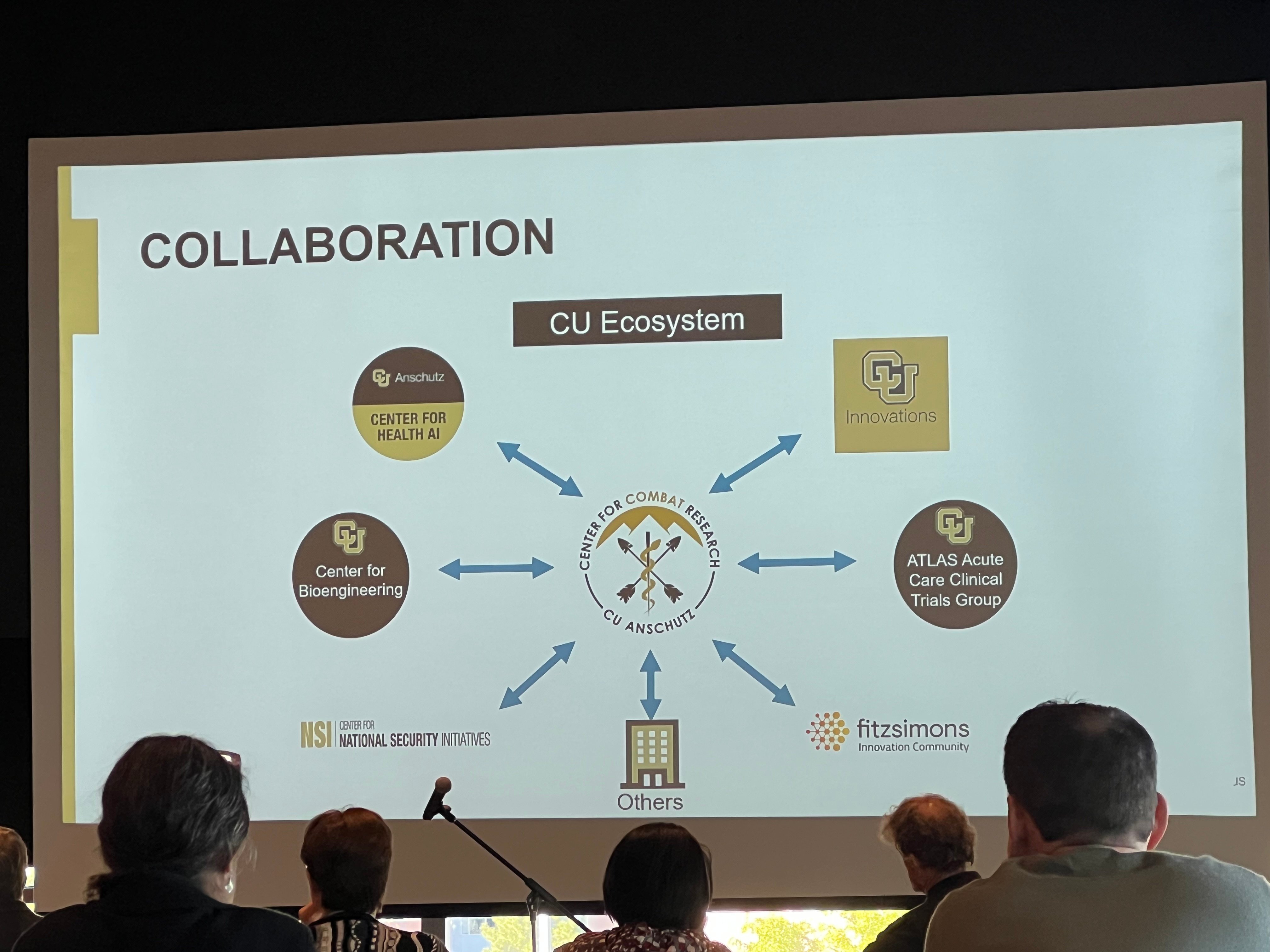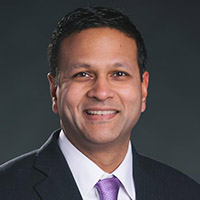A vast majority (95%) of Department of Defense (DoD) health research ends up in civilian hospitals, and the University of Colorado Anschutz Center for Combat Medicine and Battlefield (COMBAT) Research works toward that number to save and improve lives on the battlefield and at home.
That was the central message of a discussion led by Vik Bebarta, MD, founder and director of COMBAT, professor ofEmergency Medicine and Toxicology at the CU School of Medicine, during the 2023 Science Writers conference on Oct. 8 at CU Anschutz.
Bebarta began by noting that COMBAT continues a long military medicine tradition on the CU Anschutz Medical Campus, stretching back to its founding as a military hospital base and the December 1941 opening of the now Fitzsimons Building to patients (four days before the attack on Pearl Harbor). He then discussed the genesis of what would become COMBAT through his deployment in Iraq in 2005.
Bebarta and his fellow servicemembers made a breakthrough discovery while in Fallujah, Iraq, on the relationship between eardrum and brain injuries, when servicemembers were sent back into the field after not meeting the criteria of “war injured” with no visible injuries. The findings were eventually published and led to a change in military and congressional policy to better protect the overall health of U.S. soldiers.
That same energy, momentum and push for better treatment has translated over to COMBAT since the center’s founding in late 2018, Bebarta said. This includes over 70 DoD research grants and over 400 high-impact publications from across the center’s staff and research investigators.
The center’s growth is made possible by the unique intersection of collaborative partners CU Anschutz has across academic, military and industry, he said. In particular, the CU Anschutz campus sits within a 45-minute drive of seven military bases or installations – increasing opportunities to build stronger relationships thanks to that proximity, Bebarta said.

A slide from Bebarta's presentation shows the connections COMBAT has across the CU system. |
He provided an overview of recent, wide-ranging COMBAT research projects and publications, discussing how the studies are applicable to both military and civilian medicine, including:
- BioSticker & BioButton researched as part of the DoD’s efforts around wearable technology to monitor soldier health remotely, the devices were similarly applicable to help monitor for early signs of COVID-19 and more accurate remote patient monitoring.
- The SAVE O-2 Study led by Adit Ginde, MD, MPH, which is ongoing and seeking to better understand how much oxygen is needed for critically injured patients. The study has the potential to reshape oxygen logistics – important given the weight and costs associated with carrying oxygen in military and trauma care settings. The study is expected to conclude within a few months, Bebarta said.
Bebarta concluded the session with a short Q&A with attendees, answering questions around how the center has been able to expedite DoD grants, how the center is working to improve wound care and the advancements being made in burn and frostbite treatment.




